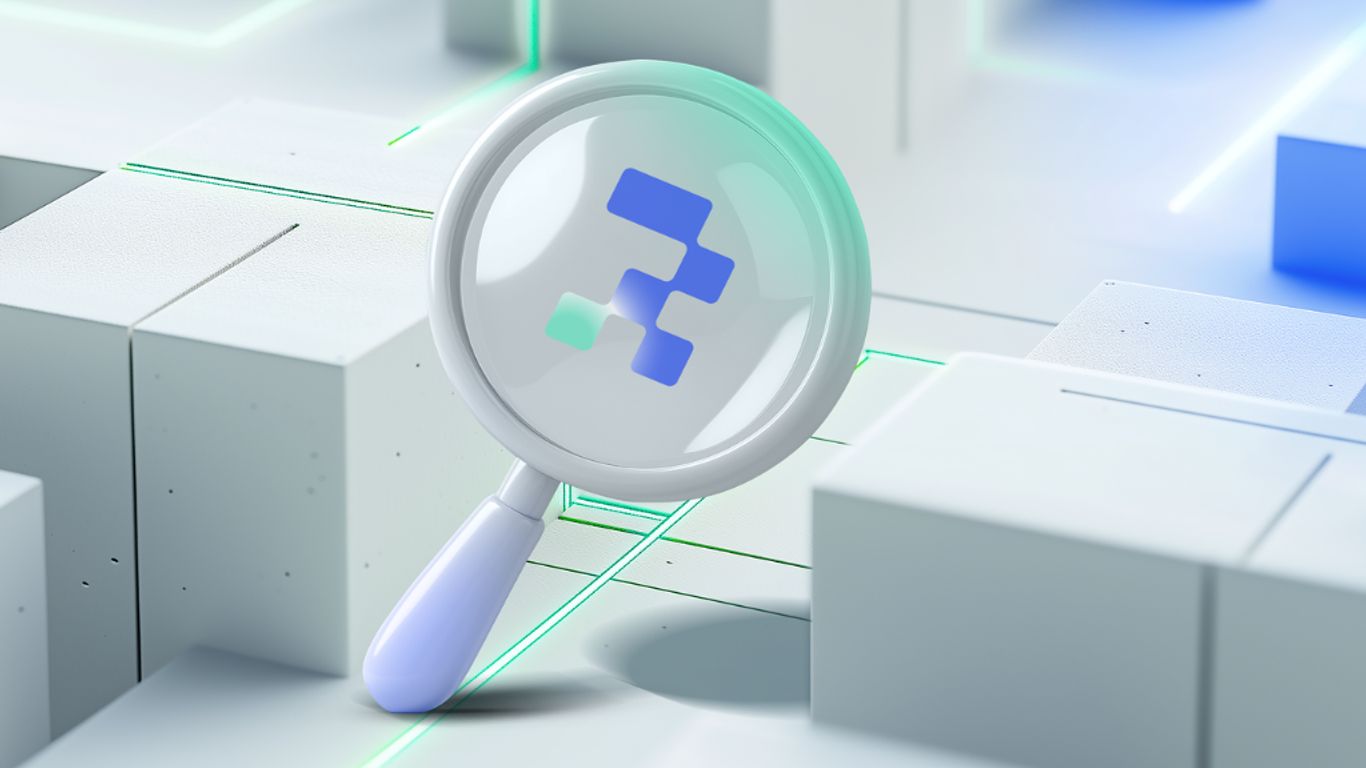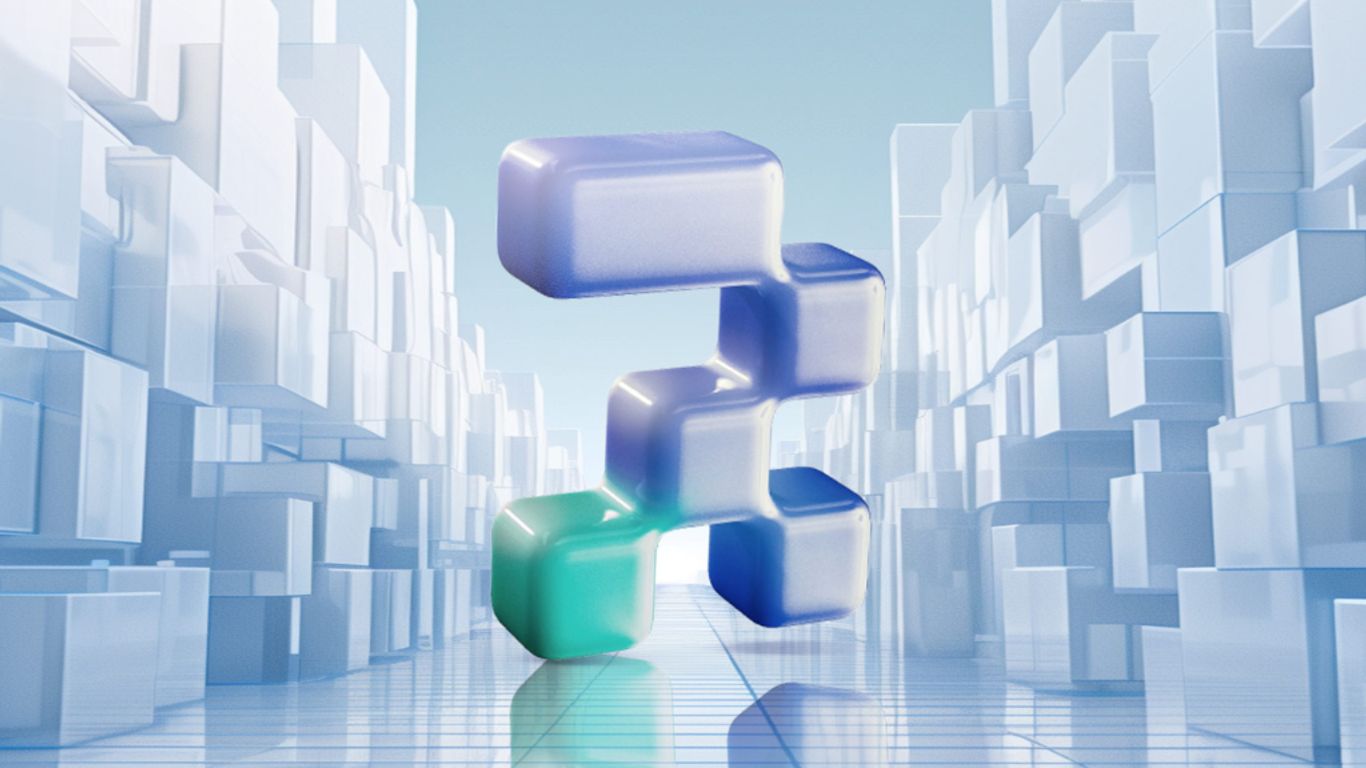In today's digital world, asset tokenization is becoming increasingly important. Permissioned blockchains play a key role in making this process safer and more controlled. These specialized blockchains allow only certain users to access and manage digital assets, which helps protect sensitive information and ensures that only trusted parties can participate. This article will explore how permissioned blockchains enhance security in asset tokenization, making it a reliable choice for businesses and investors alike.
Key Takeaways
- Permissioned blockchains limit access to trusted participants, enhancing security.
- They use advanced identity verification to ensure only authorized users can interact with assets.
- Smart contracts on these blockchains help automate processes safely and efficiently.
- Data privacy is prioritized through encryption and secure consensus methods.
- The controlled environment of permissioned blockchains makes them ideal for regulatory compliance.
Understanding Permissioned Blockchains
Defining Permissioned Blockchains
A permissioned blockchain is a type of distributed ledger that is not open to everyone. Only users who have been granted access can use it. This means that organizations can control who sees and interacts with the data, enhancing security and privacy.
Key Features of Permissioned Blockchains
Some important features of permissioned blockchains include:
- Controlled Access: Only authorized users can join the network.
- Identity Management: Users are verified through digital certificates.
- Governance: Organizations can set rules for how the blockchain operates.
Differences Between Permissioned and Public Blockchains
Permissioned blockchains provide a secure environment for organizations to manage sensitive data while ensuring that only trusted participants can access it.
The Role of RWA Token Standards (ERC-3643) in Security
Overview of ERC-3643
ERC-3643 is an open-source protocol for permissioned tokens, designed for the compliant representation of assets on EVM blockchain networks. This standard allows for the secure and efficient management of real-world assets (RWAs) in a digital format.
Security Features of ERC-3643
The security features of ERC-3643 include:
- Decentralized Identity: This ensures that only authorized users can access and trade tokenized assets, reducing the risk of identity theft.
- Multi-Factor Authentication (MFA): MFA adds an extra layer of security by requiring multiple verification factors for access.
- Smart Contract Audits: Regular audits of smart contracts help identify and fix vulnerabilities, ensuring they function as intended.
Compliance and Regulatory Benefits
ERC-3643 also provides significant compliance benefits:
- KYC and AML Compliance: Ensures adherence to Know Your Customer (KYC) and Anti-Money Laundering (AML) regulations, which is crucial for maintaining system integrity.
- Regulatory Transparency: The protocol enhances transparency, making it easier for organizations to meet regulatory requirements.
By implementing ERC-3643, organizations can create a secure environment for RWA tokenization, protecting assets and ensuring trustworthiness in transactions.
Identity and Access Management in Permissioned Blockchains
Authentication Mechanisms
In permissioned blockchains, authentication mechanisms are crucial. They ensure that only verified users can access the network. This is done through various methods, such as:
- Digital certificates
- Biometric verification
- Multi-factor authentication
These methods help maintain a secure environment by confirming the identity of participants before they can engage in transactions.
Role-Based Access Control
Role-based access control (RBAC) is another key feature. It allows organizations to define specific roles for users, determining what actions they can perform. For example:
- Administrators can manage user permissions.
- Users can view and interact with data relevant to their roles.
- Auditors can access logs for compliance checks.
This structured approach helps in managing who can do what within the blockchain, enhancing security.
Identity Verification Processes
Identity verification processes are essential for ensuring that only authorized individuals participate in the network. These processes may include:
- Document verification: Checking government-issued IDs.
- Background checks: Ensuring users have no criminal history.
- Continuous monitoring: Regularly updating user information to maintain security.
Effective identity and access management is vital for maintaining the integrity of permissioned blockchains. It helps prevent unauthorized access and protects sensitive data.
Secure Consensus Mechanisms for Tokenization
Practical Byzantine Fault Tolerance (PBFT)
Practical Byzantine Fault Tolerance (PBFT) is a consensus method that helps ensure agreement among nodes in a blockchain. It is designed to work even if some nodes fail or act maliciously. This makes PBFT a strong choice for permissioned blockchains, as it enhances security and trust among participants.
Raft Consensus Algorithm
The Raft consensus algorithm is another effective method used in permissioned blockchains. It focuses on simplicity and understandability, making it easier to implement. Raft ensures that all nodes agree on the state of the blockchain, which is crucial for maintaining a secure environment for asset tokenization.
Proof of Authority (PoA)
Proof of Authority (PoA) is a consensus mechanism where a limited number of nodes are authorized to validate transactions. This method is efficient and fast, making it suitable for permissioned blockchains. By using PoA, organizations can maintain control over who validates transactions, thus enhancing security.
In summary, secure consensus mechanisms like PBFT, Raft, and PoA play a vital role in ensuring the integrity and security of tokenized assets in permissioned blockchains. They help build trust among participants and protect against malicious activities.
Confidentiality and Data Privacy in Tokenized Assets
Encryption Techniques
To ensure the safety of sensitive information, encryption is vital. It transforms data into a secure format that can only be read by those with the right key. Here are some common encryption methods:
- Symmetric Encryption: The same key is used for both encryption and decryption.
- Asymmetric Encryption: Uses a pair of keys, one for encryption and another for decryption.
Zero-Knowledge Proofs
Zero-knowledge proofs allow one party to prove to another that they know a value without revealing the value itself. This is crucial in maintaining data privacy while still verifying transactions.
Secure Multi-Party Computation
This technique enables multiple parties to compute a function over their inputs while keeping those inputs private. It ensures that no single party has access to all the data, enhancing confidentiality.
In the world of tokenization, protecting data is not just about security; it's about trust and integrity in transactions.
Summary
In summary, confidentiality and data privacy are essential in tokenized assets. By using encryption, zero-knowledge proofs, and secure multi-party computation, we can ensure that sensitive information remains protected while still allowing for efficient transactions. Tokenization plays a key role in this process, making it easier to manage and secure data effectively.
Implementing Robust Security Measures

Ensuring the safety of tokenized assets is essential. Here are some key security measures to consider:
Secure Node Infrastructure
- Establish a strong node infrastructure to protect the blockchain network.
- Nodes should have strict access controls and regular security updates.
- Use secure hardware and follow best practices for server protection.
Encryption and Data Protection
- Protect sensitive data using encryption methods.
- Implement secure transport protocols and data encryption at rest.
- Strong encryption algorithms and proper management of cryptographic keys are vital.
Continuous Monitoring and Incident Response
- Set up continuous monitoring to detect security threats in real-time.
- Use security tools to watch for suspicious activities and unauthorized access.
- Develop and regularly test incident response plans to handle security issues quickly.
Implementing these security measures helps create a safer environment for asset tokenization, ensuring trust and reliability in the system.
Leveraging Permissioned Blockchains for Asset Tokenization
When it comes to tokenizing real-world assets, permissioned blockchains provide several key benefits. Here’s how they enhance security and efficiency in the tokenization process:
Controlled Access
- Permissioned blockchains allow organizations to manage who can join the network and interact with tokenized assets. This means only trusted parties, like asset owners and regulators, can participate.
- By controlling access, organizations can create secure environments that prevent unauthorized actions.
Regulatory Compliance
- Tokenizing assets often requires following strict laws and regulations. Permissioned blockchains help organizations meet these requirements by enabling strong identity checks and compliance measures.
- This ensures that all tokenized assets are legally sound and meet necessary standards.
Integration with Existing Systems
- Many organizations already have systems in place. Permissioned blockchains can easily connect with these systems, making it simpler to adopt tokenization.
- This compatibility allows businesses to use familiar tools while transitioning to a more modern asset management approach.
Permissioned blockchains are transforming how we manage assets, making the process safer and more efficient for everyone involved.
By leveraging these features, organizations can effectively utilize permissioned blockchains for secure and efficient asset tokenization.
Technological Advancements in Blockchain Infrastructure
Blockchain Infrastructure Improvements
Recent advancements in blockchain technology have made it stronger and more scalable. These improvements help create a digital version of real assets more securely and efficiently. Enhanced security features and better consensus methods are making blockchain a more trustworthy platform for tokenization.
Security Enhancements
Security is very important in tokenization. With more assets being tokenized, keeping these digital tokens safe is crucial. New methods in cryptography and smart contract checks are helping to protect sensitive information and stop unauthorized access. These security upgrades are key to building trust among users and investors.
Scalability Solutions
Scalability has always been a challenge for blockchain networks. However, new solutions like sharding and layer-two protocols are addressing these issues. These technologies allow for more transactions to be processed simultaneously, making the system more efficient. As a result, tokenization can handle a larger volume of assets without compromising on speed or security.
The future of tokenization looks promising with these technological advancements, paving the way for a more inclusive and efficient financial ecosystem.
Summary
In summary, the top 6 blockchain technology trends are driving the tokenization of assets, making it a game changer for institutional investors. By improving interoperability and addressing security challenges, the future of tokenization looks bright.
Market Fluidity and Efficiency Through Tokenization
Fractional Ownership
Tokenization allows for fractional ownership of assets, which means that investors can buy a small part of an asset instead of the whole thing. This is especially useful for traditionally hard-to-sell assets like real estate. For example, instead of needing a large sum to buy a property, investors can purchase tokens that represent a share of that property. This makes it easier to buy and sell, increasing liquidity in the market.
Streamlined Transactions
Using blockchain technology, transactions can be completed much faster. Smart contracts automate the process, which means less time spent on paperwork and fewer middlemen involved. This leads to lower costs and quicker transactions, making it possible to trade assets 24/7.
Global Market Access
Tokenization opens up a global market for assets. Investors from anywhere in the world can participate, which increases the number of potential buyers and sellers. This wider access can lead to better prices and more efficient markets.
Benefits of Tokenization
- Increased Liquidity: More people can invest in assets, making it easier to buy and sell.
- Lower Costs: Fewer middlemen mean lower fees for transactions.
- Faster Transactions: Smart contracts speed up the process significantly.
Tokenization is transforming how we think about investing, making it easier and more accessible for everyone.
Conclusion
In summary, tokenization enhances market fluidity and efficiency by allowing fractional ownership, streamlining transactions, and providing global access to assets. This innovation is reshaping the investment landscape, making it more inclusive and efficient.
Diversification of Tokenized Assets
Expanding Beyond Real Estate and Art
Tokenization started with high-value items like real estate and art, but now it’s growing to include many other types of assets. This broadening scope is important because it opens up new chances for investment and creates more markets. Experts predict that the tokenization of real-world assets could reach nearly $4 trillion by 2030.
Inclusion of Debt Instruments and Commodities
Tokenization is not just for physical assets. It also includes things like debt instruments and commodities. This means that investors can now own parts of bonds or even commodities like gold and oil. Here’s a quick look at some asset types that can be tokenized:
The future of tokenization is bright, as it allows for a wider range of investment opportunities, making it easier for everyone to participate in the market.
New Investment Opportunities
With the rise of tokenization, investors can now explore new areas that were previously hard to access. This includes unique collectibles like vintage cars and rare wines. By allowing fractional ownership, tokenization makes it possible for more people to invest in these exciting assets. Tokenization is changing the way we think about ownership and investment.
Governance and Consensus in Permissioned Blockchains
Customizable Governance Models
Permissioned blockchains allow organizations to create customizable governance models. This means they can set rules and processes that fit their specific needs. By having a clear governance structure, organizations can ensure that decision-making is fair and transparent. This helps prevent any one group from having too much power.
Efficient Transaction Validation
In permissioned blockchains, transaction validation is done through consensus mechanisms. These mechanisms are designed to be efficient, allowing for quick agreement on transactions. This is important because it keeps the network running smoothly and ensures that all participants can trust the system.
Network Integrity
Maintaining network integrity is crucial in permissioned blockchains. The consensus mechanisms used help ensure that all transactions are valid and that the data on the blockchain is accurate. This means that any attempts to alter past transactions would require the agreement of most nodes, making it very difficult for bad actors to succeed.
In summary, permissioned blockchains provide a structured approach to governance and consensus, enhancing security and trust among participants.
Summary Table of Key Features
By implementing these features, permissioned blockchains create a secure environment for asset tokenization, ensuring that all participants can operate with confidence.
Benefits of Tokenization for Asset Ownership
Tokenization brings several key advantages for owning assets:
Fractional Ownership
- Fractional ownership allows individuals to invest in a small part of a larger asset. This makes it easier for more people to invest in high-value items like real estate or art.
Increased Liquidity
- Tokenized assets can be traded more easily, leading to quicker sales. This means that investors can buy and sell their shares without long waiting periods.
Global Access
- With tokenization, investors from anywhere in the world can participate in markets that were previously out of reach. This opens up opportunities for many people.
Tokenization is changing how we think about ownership and investment, making it easier for everyone to participate in the economy.
In summary, tokenization is transforming the way we manage and trade assets, making the process more efficient and accessible for all. Tokenized assets benefit from permissionless liquidity, open access, on-chain transparency, and reduced transactional friction compared to traditional assets.
Conclusion
In conclusion, permissioned blockchains play a crucial role in making asset tokenization safer and more reliable. By allowing only approved users to access the network, these blockchains help protect sensitive information and reduce the chances of fraud. They also provide better control over who can participate in transactions, ensuring that only trustworthy parties are involved. As technology continues to improve, permissioned blockchains will likely become even more important in the world of finance, making it easier for everyone to invest in and manage assets securely.
Frequently Asked Questions
What is a permissioned blockchain?
A permissioned blockchain is a type of blockchain where only certain people can access and use it. This means that not everyone can join, which helps keep things secure.
How does tokenization work?
Tokenization is the process of turning real-world assets, like property or art, into digital tokens. These tokens represent ownership and can be traded more easily.
What are the benefits of using permissioned blockchains for tokenization?
Permissioned blockchains offer better security and control over who can access the network. This helps protect sensitive information and ensures that only trusted parties can participate.
What is the ERC-3643 standard?
ERC-3643 is a set of rules for creating tokens on the Ethereum blockchain. It focuses on security and compliance, making it easier to follow laws and regulations.
How do smart contracts enhance security?
Smart contracts are self-executing contracts with the terms written into code. They help automate processes and reduce the chances of human error, making transactions safer.
What role does identity management play in permissioned blockchains?
Identity management ensures that only verified users can access the blockchain. This helps prevent unauthorized access and keeps the network secure.
What are the challenges of tokenization?
Some challenges include navigating different laws in various countries, ensuring the security of smart contracts, and achieving widespread adoption by users.
How can tokenization improve market efficiency?
Tokenization can make it easier to buy and sell assets, allowing for faster transactions and greater access for a wider range of investors.




